I wrote an application where the usage of a number of vehicles is recorded as seen in the screenshot.
I'd like to generate a report for gaps (in miles) between individual usages because the vehicles should not be used other than for travel that is recorded in the application.
A gap would occur when the current record beg odometer - previous record end odometer yields a number greater than 0 -- for that specific car. See the different colored circles. How can I achieve this with sql? I'm using oracle (11g) but I imagine the sql will be similar. Thank you.
Sample output:
Vehicle V06
Invoice Date Dest Gap
123 1/2/14 York 14.0
122 1/1/14 Pburg 0.0
Vehicle V05
Invoice Date Dest Gap
121 1/3/14 Mill 0.0

* I realize I should have used test data that includes a gap, though these should be rare in practice. In such a case,
Invoice 67189 would have End Od of 92590 resulting in a GAP of 3.0 miles for 67190